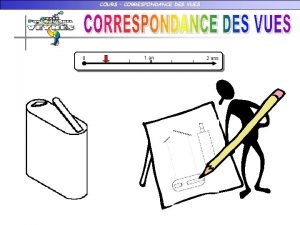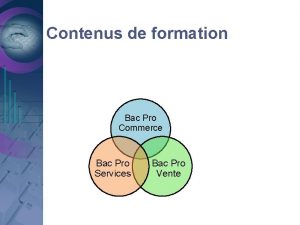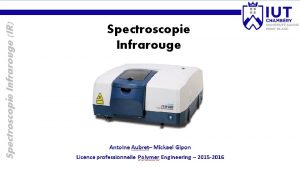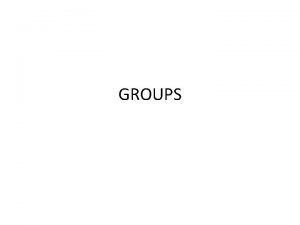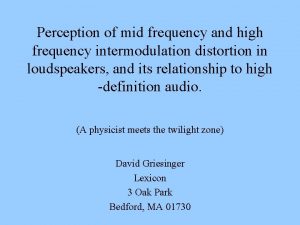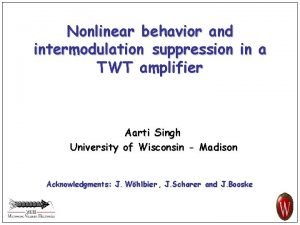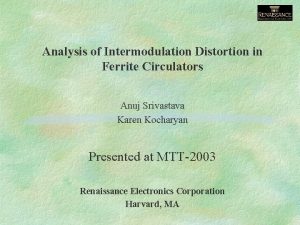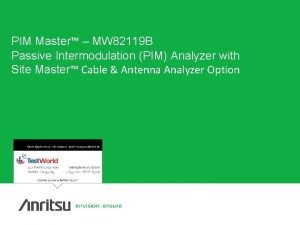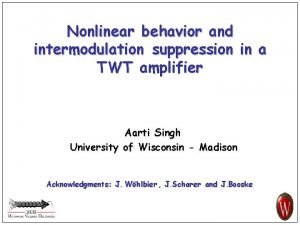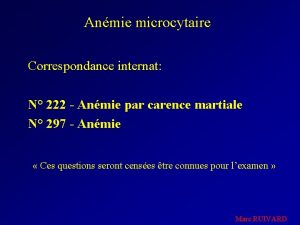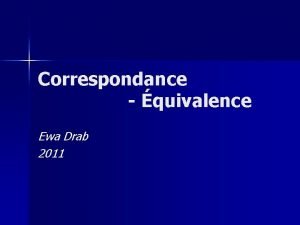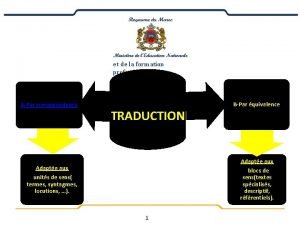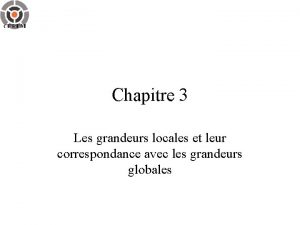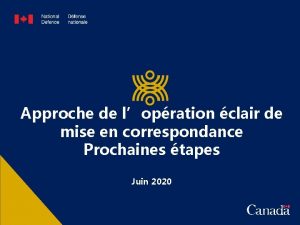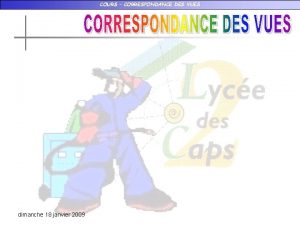Correspondance Group RX Intermodulation CEPT CG RXIM SE



















- Slides: 19

Correspondance Group RX Intermodulation CEPT CG RXIM SE 21(20), virtual event, 14 th September 2020 Prof. Dr. -Ing. Georg Fischer FAU – Institute for Electronics Engineering Birthplace of mp 3

Contents 4. 1 Restriction to IP 3 4. 2 Restriction to Memoryless nonlinearity 4. 3 Applicable RX level range 4. 4 Applicable frequency range CEPT CG RXIM SE 21(20), virtual event, 14 th Sept. 2020 2

4. 1 Restriction to IP 3

Restriction to IP 3 Basics Analytic description of Non-linearity • In order to cover all effects up to highest signal levels, even into compression, a large scale Volterra field would be needed, covering multiple orders off non-linearity, different temporal depths and cross terms • A number of parameters would need to be estimated to describe receiver, simplification necessary as it is not possible to identify all parameters due to estimation errors, also there is no tip into receiver, sometimes only OTA access • Also it would be questionable if model represents a wide range of typical receivers • So how many parameters are really needed to conduct SEAMCAT compatibility study? Typical approach in receiver specifications • The higher the order of non-linearity, the weaker the effect • Therefore typically concentration on dominant non-linearity, which is third order IP 3 • Even order IP 2, IP 4 anyhow irrelevant, as mixing product shows up far off CEPT CG RXIM SE 21(20), virtual event, 14 th Sept. 2020 4

Restriction to IP 3 GSM Specification (GSM 11. 21) CEPT CG RXIM SE 21(20), virtual event, 14 th Sept. 2020 5

Restriction to IP 3 GSM Tetra Specification CEPT CG RXIM SE 21(20), virtual event, 14 th Sept. 2020 6

Restriction to IP 3 Widening effects • Intermodulation also implies widening of interference noise • IP 3 case: whereby f 1 is sinosidual and f 2 is modulated. Then IMnoise has same bandwidth as f 2 • In real scenarios, both interferer signals that intermodulate would be modulated. Then IMnoise is 3 x wider than original, results into -4, 77 d. B noise inside VLR bandwitdh • Real scenario, both interferers modulated, then IMnoise is 5 x wider, results into -7 d. B noise inside VLR bandwidth • The attenuation from widening further weakens higher order effects Proposal • Only treat IP 3 • Ignore higher order due to dominance of IP 3 and widening attenuation with higher orders CEPT CG RXIM SE 21(20), virtual event, 14 th Sept. 2020 7

4. 2 Restriction to Memoryless nonlinearity

Restriction to Memoryless nonlinearity Basics Memory effects • Memory contained non-linearity (dynamic non-linearity) normally much weaker than memoryless non-linearity (static non-linearity) • Assuming static nonlinearity of third order widens signal by factor 3, dynamic nonlinearity shows up even far off Wideband Interferer IP 3 Memory IP 3 IP 5 IP 3 Memory IP 5 Spectrum shaping • Static non-linearity convex spectrum bending • Dynamic non-linearity concave spectrum bending CEPT CG RXIM SE 21(20), virtual event, 14 th Sept. 2020 9

Restriction to Memoryless nonlinearity Asymmetry Further spectral shaping from memory • If there are memory effects IP 3 effects from upper or lower interferers behave differently • There would be asymmetry in spectral shoulders IP 3 Wideband Interferer IP 3 Consequences • With receiver tests, interferers would have to be placed above and below wanted • However typical receiver specs don’t consider both placements of interferers CEPT CG RXIM SE 21(20), virtual event, 14 th Sept. 2020 10

Restriction to Memoryless nonlinearity Asymmetry Receiver tests • Are there placements below and above? NO • Has anybody every detected asymmetry at the low levels with RXIM tests? ILT 1 ILT 2 VLR NB NB NB VLR ILT 1 ILT 2 NB NB NB Relation to PA Technology • Asymmetry is only observed if PA output levels approach saturation • For moderate PA output levels, no asymmetry is observed CEPT CG RXIM SE 21(20), virtual event, 14 th Sept. 2020 11

Restriction to Memoryless nonlinearity Asymmetry Proposal to move forward • Assume “weak non-linearity” for RX • Then no memory effects present • RX level must be weak to moderate, not approaching saturation • Algorithm gets wrong for large signal levels • Proposal to ignore memory effects Hands on calculations • Typically IP 3 point 10… 12 d. B higher than Psat • If IP 3 is fixed, then Psat can be estimated • Stay well below Psat for applicability of RXIM algorithm (consider total power present to RX input) CEPT CG RXIM SE 21(20), virtual event, 14 th Sept. 2020 12

4. 3 Applicable RX level range

Applicable RX level range Intro Assumption of “Weak nonlinearity” for RXIM • Requires that level is kept weak to moderate to derive reliable results for RXIM noise falling into VLR bandwidth • However, what is the max input level to consider results from RXIM algo reliable? • Pragmatic approach: When “outage due to blocking” is detected in SEAMCAT, we do not mind whether simultaneously an event “Outage due to RXIM” is present • Thus we consider blocking spec to derive maximum input level, up to which we trust RXIM algorithm CEPT CG RXIM SE 21(20), virtual event, 14 th Sept. 2020 14

Applicable RX level range Levels with TETRA RX CEPT CG RXIM SE 21(20), virtual event, 14 th Sept. 2020 15

Applicable RX level range SEAMCAT How does SEAMCAT work? • There was a videoconf with SEAMCAT people on 23 rd July discussing the outage detector in SEAMCAT • SEAMCAT sets several criterions for outage, e. g. SINR S/(N+I) • Adjacent channel interference is converted to an artificial equivalent interference falling into VLR bandwidth. • According blocking mask, conversion is done differently for different offsets • All converted noise from adjacent channels is added up as summed “I” (Adjacent channel rejection ratio) • RXIM noise would be a further contribution to interference noise • If “I” due to blocking is already large enough, “outage due to blocking” is detected. Then further I from RXIM does not change the detection of outage • This implies that RX input levels above blocking event are irrelevant for RXIM algorithm CEPT CG RXIM SE 21(20), virtual event, 14 th Sept. 2020 16

4. 4 Applicable frequency range

Applicable frequency range Where is algorithm applicable? Questions • What would be the lowest frequency? Is there any measurement experience? E. g. Metrological aids service at 8, 3 k. Hz • What would be the highest frequency? Is there any measurement experience? E. g. Radio astronomy service at 275 GHz RED directive • "There has been a regulatory change in Europe with the introduction of the Radio Equipment Directive (RED), 2014/53/EU 1 [1], which became fully applicable to radio products being placed on the market from 13 June 2017. The RED explicitly includes receivers, which as well as transmitters must make effective and efficient use of spectrum, meaning a receiver should have a level of performance that allows it to operate as intended and protects it against the risk of harmful interference, in particular from shared or adjacent channels. To support this ETSI develops Harmonised Standards which include receiver parameters and characteristics providing a minimum set of conformance requirements. " CEPT CG RXIM SE 21(20), virtual event, 14 th Sept. 2020 18

Applicable frequency range Where is algorithm applicable? RED directive EQUIPMENT NOT COVERED BY THIS DIRECTIVE 1. Radio equipment used by radio amateurs within the meaning of Article 1, definition 56, of the International Telecommunications Union (ITU) Radio Regulations, unless the equipment is made available on the market. The following shall be regarded as not being made available on the market: (a) radio kits for assembly and use by radio amateurs; (b) radio equipment modified by and for the use of radio amateurs; (c) equipment constructed by individual radio amateurs for experimental and scientific purposes related to amateur radio. 2. Marine equipment falling within the scope of Council Directive 96/98/EC (1). 3. Airborne products, parts and appliances falling within the scope of Article 3 of Regulation (EC) No 216/2008 of the European Parliament and of the Council (2). 4. Custom-built evaluation kits destined for professionals to be used solely at research and development facilities for such purposes. CEPT CG RXIM SE 21(20), virtual event, 14 th Sept. 2020 19
 Correspondance des vues
Correspondance des vues Questions d’entretien rédacteur
Questions d’entretien rédacteur Tableau correspondance gicleur fioul
Tableau correspondance gicleur fioul Bac pro commerce par correspondance
Bac pro commerce par correspondance Table de correspondance en spectroscopie infrarouge
Table de correspondance en spectroscopie infrarouge La forme de la lettre administrative
La forme de la lettre administrative Primary group in sociology
Primary group in sociology Amino group and carboxyl group
Amino group and carboxyl group Ap psychology chapter 13
Ap psychology chapter 13 Jrcptb
Jrcptb Group yourselves
Group yourselves In group out group
In group out group Y = a(b)^x
Y = a(b)^x How to compare thermal stability of group 2 nitrates
How to compare thermal stability of group 2 nitrates Sumner's classification of social groups
Sumner's classification of social groups Anova within group and between group
Anova within group and between group Amino group and carboxyl group
Amino group and carboxyl group Joining together group theory and group skills
Joining together group theory and group skills Crmug phoenix
Crmug phoenix Gigi investment group
Gigi investment group
